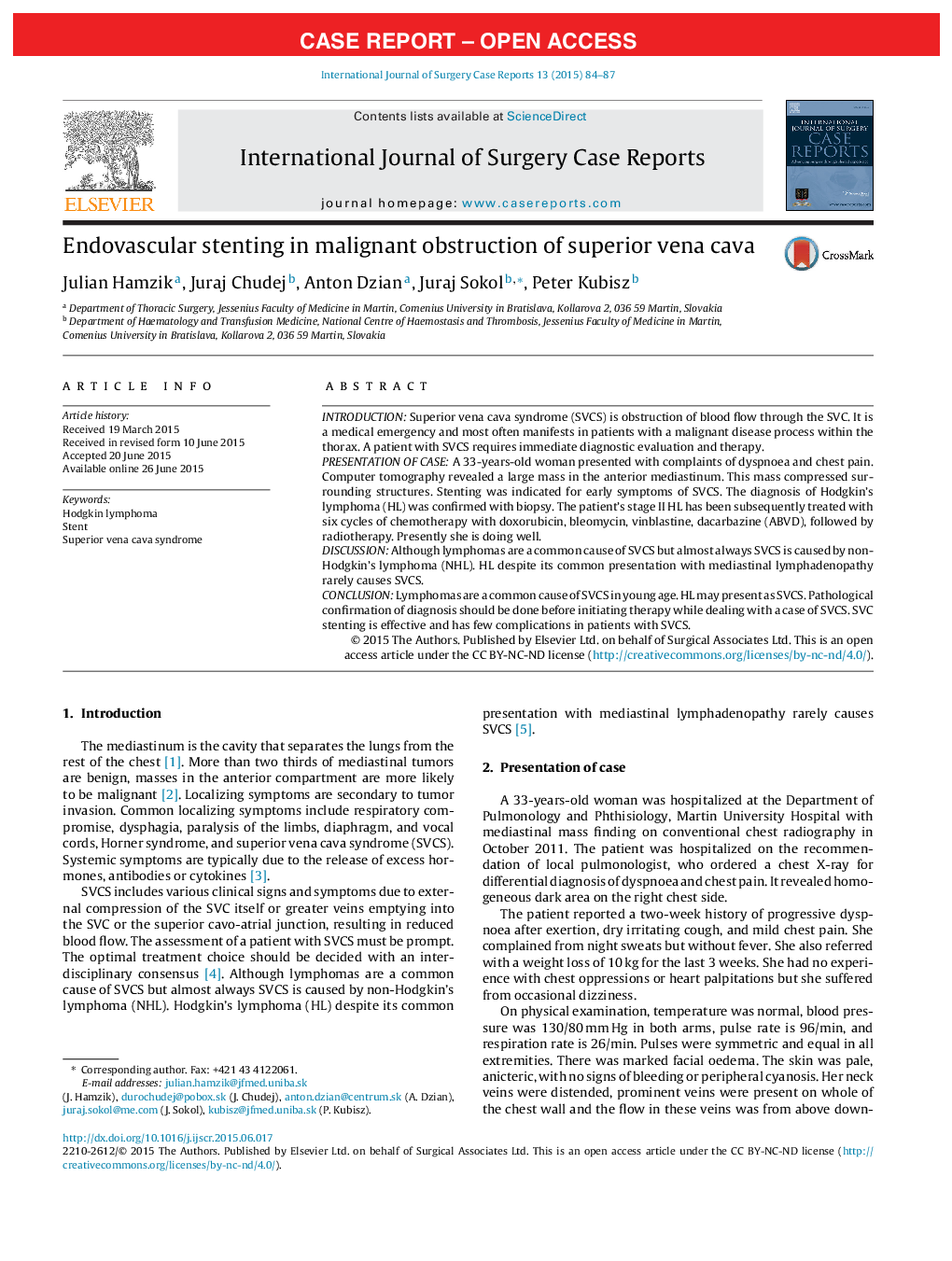| Article ID | Journal | Published Year | Pages | File Type |
|---|---|---|---|---|
| 4288921 | International Journal of Surgery Case Reports | 2015 | 4 Pages |
•Lymphomas are a common cause of SVCS in young age.•HL may present as SVCS.•Pathological confirmation of diagnosis should be done before initiating therapy while dealing with a case of SVCS.•SVC stenting is effective and has few complications in patients with SVCS.
IntroductionSuperior vena cava syndrome (SVCS) is obstruction of blood flow through the SVC. It is a medical emergency and most often manifests in patients with a malignant disease process within the thorax. A patient with SVCS requires immediate diagnostic evaluation and therapy.Presentation of caseA 33-years-old woman presented with complaints of dyspnoea and chest pain. Computer tomography revealed a large mass in the anterior mediastinum. This mass compressed surrounding structures. Stenting was indicated for early symptoms of SVCS. The diagnosis of Hodgkin’s lymphoma (HL) was confirmed with biopsy. The patient’s stage II HL has been subsequently treated with six cycles of chemotherapy with doxorubicin, bleomycin, vinblastine, dacarbazine (ABVD), followed by radiotherapy. Presently she is doing well.DiscussionAlthough lymphomas are a common cause of SVCS but almost always SVCS is caused by non-Hodgkin’s lymphoma (NHL). HL despite its common presentation with mediastinal lymphadenopathy rarely causes SVCS.ConclusionLymphomas are a common cause of SVCS in young age. HL may present as SVCS. Pathological confirmation of diagnosis should be done before initiating therapy while dealing with a case of SVCS. SVC stenting is effective and has few complications in patients with SVCS.
